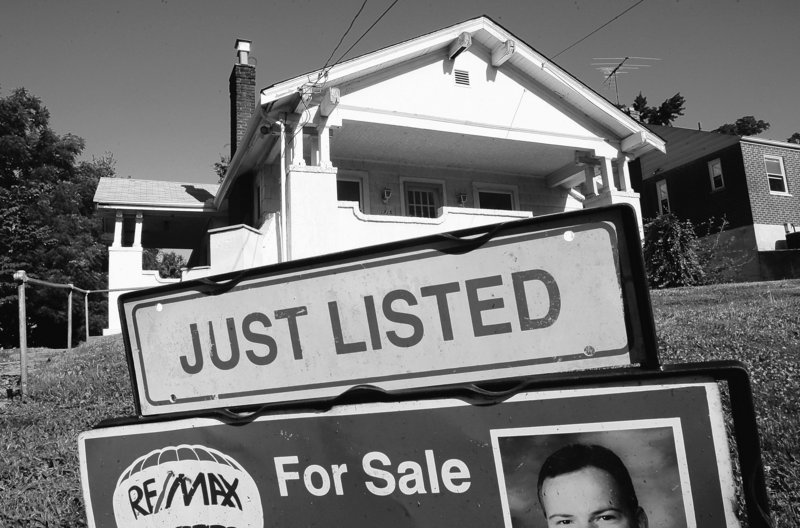WASHINGTON – A plunge in mortgage rates is giving homeowners a rare opportunity to lock in a 15-year, fixed-rate loan for less than 4 percent.
Rates haven’t dipped this low in decades. For those who can qualify, it’s the chance to pay off a home in half the time while saving tens of thousands of dollars — if not more.
But the lower rates on short-term loans are not likely to ignite the refinancing market. Most people can’t afford the higher monthly payments required by a 15-year fixed mortgage compared with a more traditional 30-year loan.
“That’s not what most people need right now. They need lower payments,” said Leif Thomsen, CEO of Mortgage Master Inc., a lender based in Walpole, Mass.
High unemployment, slow job growth and tight credit have hampered the housing industry. Also, fewer people are in the position to refinance, because low real estate prices have left many with little equity in their homes. Many people who would qualify have already refinanced in the past year.
The average rate on a 15-year fixed loan dropped to 3.95 percent last week, according to the mortgage company Freddie Mac. That’s the lowest on records the company has kept since 1991. The average rate for a 30-year fixed loan fell to 4.49 percent. Rates haven’t been that low since the 1950s, when longer-term mortgages typically lasted 20 to 25 years.
On the surface, there might not seem to be a huge difference in the two rates. But consider the savings on a $200,000 mortgage over 15 years at the current rates.
A borrower who refinances over that term could expect to save $65,000 in interest compared with the 30-year fixed loan. Still, they would pay $1,474 a month before taxes and insurance. With the 30-year loan, the payments would be $1,010 a month.
Most people in a weak economy don’t have an extra $464 a month.
Peter Thompson, senior loan officer with Prospect Mortgage in Naperville, Ill., said 15-year loans make up about 20 percent of his refinancing business. They are popular among homeowners with solid finances and plenty of equity in their homes.
“They’re not the people who bought within the past five years,” he said. “You’re looking at very well-qualified people who have owned their home for a while.”
In the refinancing boom of 2003, when the economy was healthier, moving from a 30-year loan to a 15-year loan was more common. Loans with 15-year terms made up about a third of mortgages backed by Fannie Mae and Freddie Mac. Now, that number is about 20 percent, according to data from Credit Suisse.
Credit Suisse mortgage strategist Mahesh Swaminathan said the ideal candidate already has considerable savings or a high monthly income.
“It’s just problematic for borrowers who don’t have that cash flow,” he said.
Applications to refinance loans rose 1.3 percent last week and those to purchase homes increased 1.5 percent, according to the Mortgage Bankers Association. That’s hardly enough to energize the housing market.
Rates have fallen since spring as investors seek the safety of U.S. Treasury bonds. That has lowered the yield on Treasurys. Mortgage rates tend to track those yields.
To calculate the national average, Freddie Mac collects mortgage rates on Monday through Wednesday of each week from lenders around the country. Rates often fluctuate significantly, even within a given day.
Rates on five-year, adjustable-rate mortgages averaged 3.63 percent, down from 3.76 percent a week earlier. Rates on one-year, adjustable-rate mortgages fell to an average of 3.55 percent from 3.64 percent.
The rates do not include add-on fees known as points. One point is equal to 1 percent of the total loan amount. The nationwide fee for loans in Freddie Mac’s survey averaged 0.7 of a point for all loans.
Send questions/comments to the editors.



Success. Please wait for the page to reload. If the page does not reload within 5 seconds, please refresh the page.
Enter your email and password to access comments.
Hi, to comment on stories you must . This profile is in addition to your subscription and website login.
Already have a commenting profile? .
Invalid username/password.
Please check your email to confirm and complete your registration.
Only subscribers are eligible to post comments. Please subscribe or login first for digital access. Here’s why.
Use the form below to reset your password. When you've submitted your account email, we will send an email with a reset code.